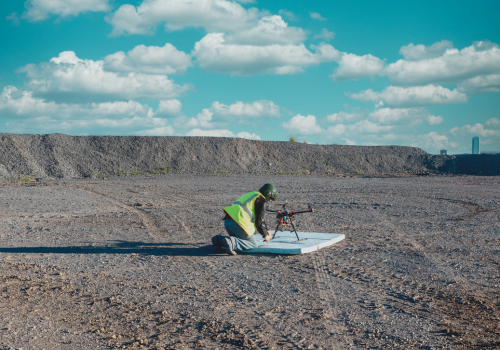Cold temperatures and winter weather bring about numerous challenges to people who work outdoors. For people who need to perform excavation or trenching, dealing with frozen and potentially slippery ground is a big challenge.
Contractors and utilities can either avoid working in these conditions—and they often do—but sometimes working in these conditions can have benefits, such as revenue for more weeks of the year or completing a project sooner, which allows you to move on to other projects after a winter break.
Working according to weather conditions
When people work outdoors, their work environment changes with the weather.
“As a contractor, you have to constantly monitor the weather. This is especially true when you expect bad weather or a change in weather,” says James Savoie, Partner at Frontiers Design Build Inc.
When looking at the weather forecast, consider that the ground doesn’t freeze after one day of snow. The temperature has to be below zero for days before the ground freezes.
“Unless the ground is wet,” says Savoie. “If there’s significant enough moisture content and temperatures drop below zero, the ground will freeze overnight. So, if it rained right before the drop in temperature—or if you sprayed or spilled water, that ground might be frozen the next day.”
Preparing for working during winter
The first step to dealing with frozen ground, according to Savoie, is making sure all your equipment is winter weather-ready.
“Before the temperature drops below freezing, you need to start using fluids in your machines that are designed for operation in colder climates,” he says. “Also, ensure each machine is maintained well. Dealing with equipment malfunction in the field is costly.”
Savoie says he tries to avoid excavation and trenching applications during winter. “A lot of times, it’s just not worth it,” he says. “Breaking frozen ground isn’t such a big deal. There are a few solutions for that. However, dealing with the changing environmental conditions of the freeze-thaw cycle can pose environmental and safety issues. As well, it’s terribly messy. You end up spending a lot of your revenue on clean up.”
Tips for digging in cold temperatures
However, if you choose or must dig in frozen ground, here are a few tips for making the job easier:
Clear the dig site of snow and ice. For safety and productivity reasons, it’s better to have a clear view of the dig area. Use hand shovels and ice melters if necessary.
Upgrade to a larger-sized machine. Just going up one horsepower size is often enough.
Use a heavy-duty digging bucket attachment instead of a general-purpose one. The teeth are better equipped to cut into harder substances.
Use a ripper attachment to cut through the first few inches. When the ground freezes due to cold temperatures (as opposed to the presence of water), only the top few inches are frozen, so once you’ve ripped it, your standard-sized excavator and general-purpose bucket should do the trick.
Cover the ground before the temperature drops. If you throw a tarp or some mats or wood on the ground before you dig, the covering will keep the ambient temperature of the ground warmer and protect it from snow, ice, and water. Covering the dig site ahead of time can make removing snow and ice easier.
Heat the ground before excavation. Cover the future dig site with heated blankets to keep it at a warmer temperature. Or you place charcoal on the area and light it on fire if conditions permit.
Use a hydrovac truck, which uses a high-pressure slurry to cut through the earth and snow and ice.
“Most times, a larger machine is good enough,” says Savoie. “Only in the presence of a lot of ice and when on a tight schedule would you resort to using a ripper attachment, heated blankets, or a hydrovac truck.”
And always check the weather. The forecast can change throughout the day, so check it multiple times each day.
Subscribe to The Utility Expo monthly newsletter to receive more industry insights like this.
Read Next
Step-By-Step Guide to Prepping Heavy Equipment for Cold Weather












